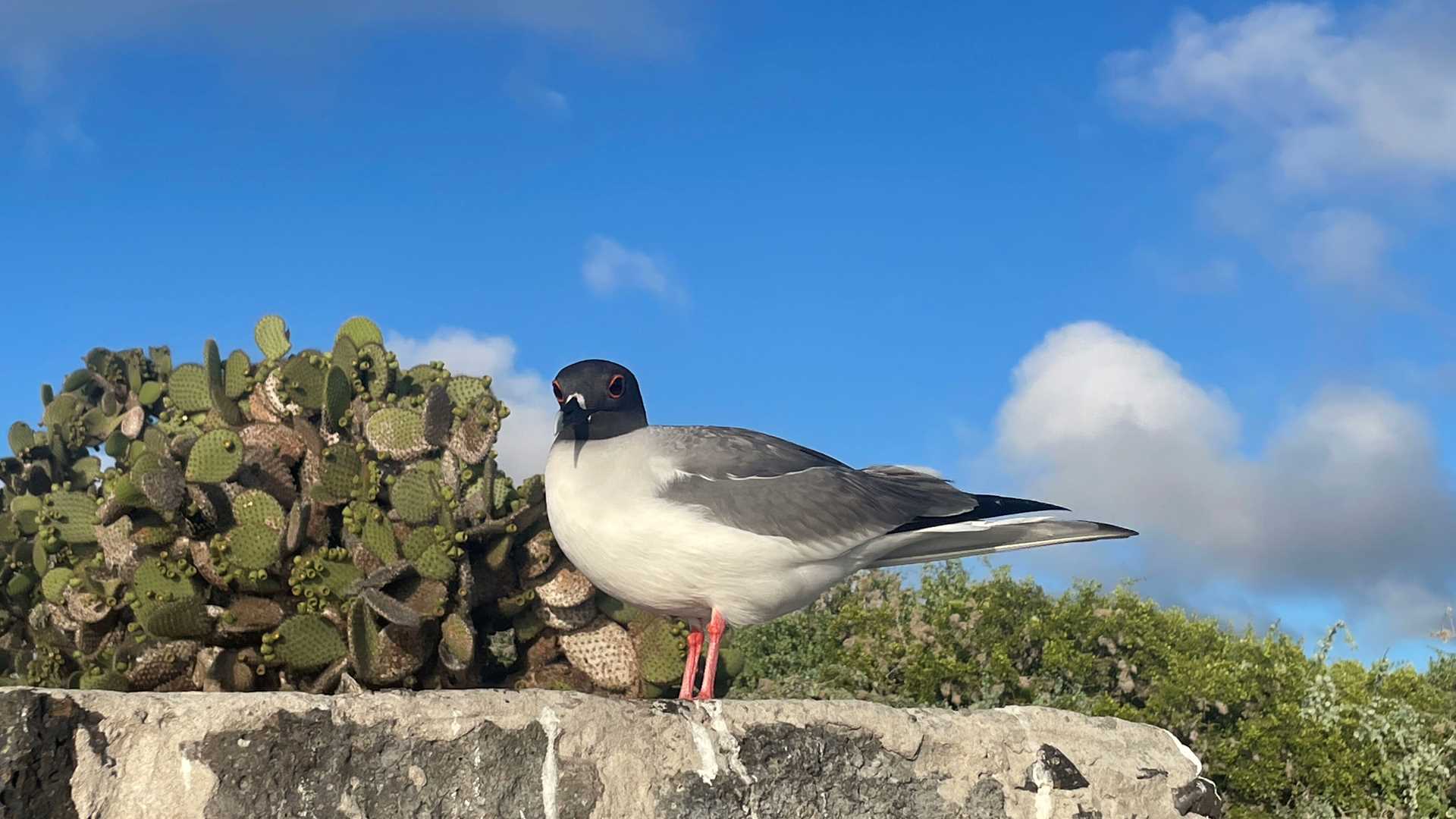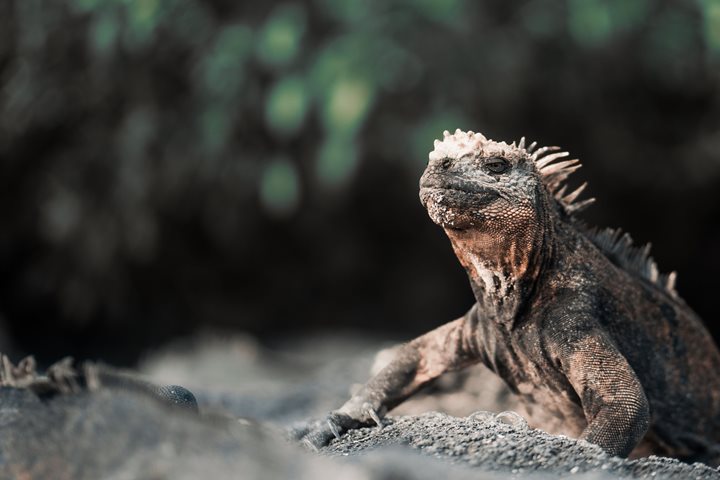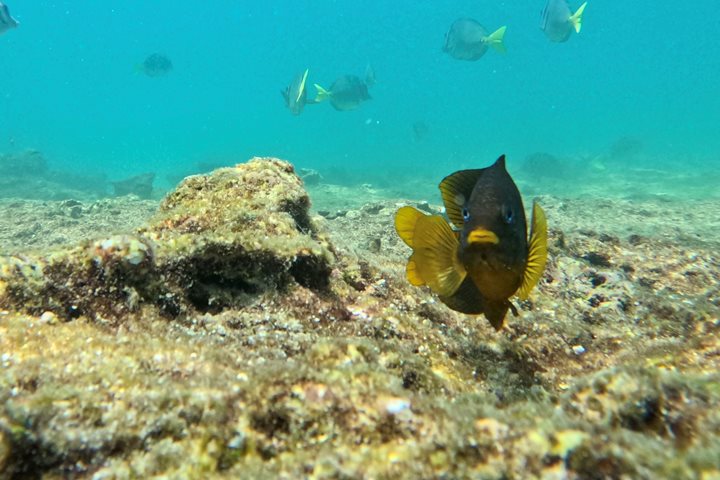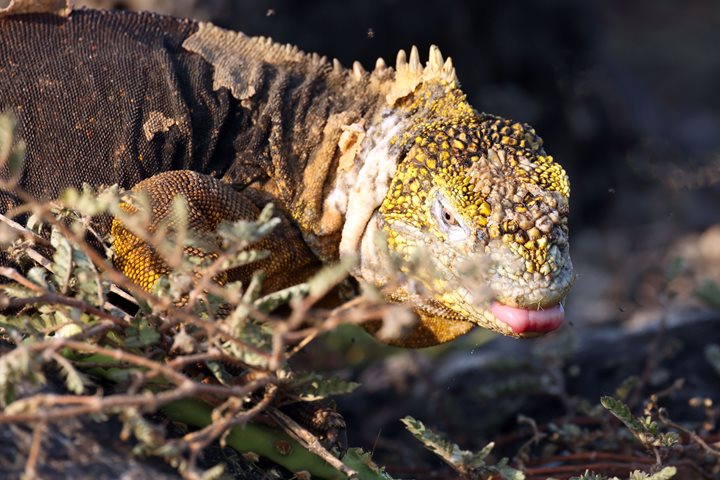Today we visited two different but unique islands. Plazas is a great place for observing Galapagos yellow land iguanas in their natural habitat. We also spotted various other species, including swallow-tailed gulls, finches, mockingbirds, lava lizards, and more. We walked across the small island and enjoyed observing the wildlife. Iguanas ate plenty, as the vegetation is abundant due to recent, heavy rains.
In the afternoon, we enjoyed many water activities, including kayaking, snorkeling, and an outing in the glass-bottom boat. Later that afternoon, we put on our walking shoes and went for a hike on Santa Fe where the pale iguanas live. The largest prickly pear cacti in the islands can be observed here. This island also has a very large colony of sea lions that welcomed us at our landing before we began our hike.







